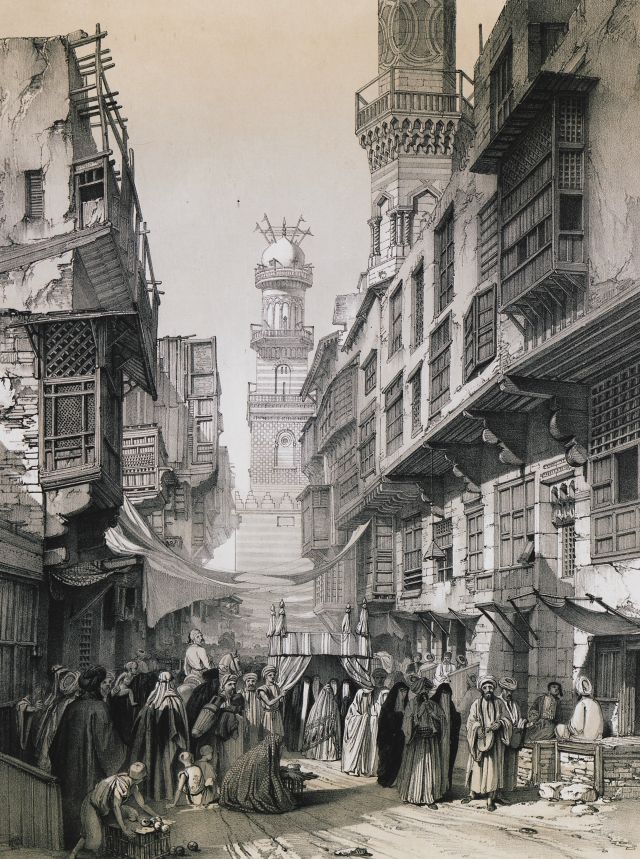The Urban Re-Construction of Space under the Mamluks
Monday, February 19, 2018 | 8 PM
The paper is a reading of space in Mamluk architecture, not based on a formal analysis of systems of geometric planning, scale and proportions; but a reading of space based on Henri Lefebvre’s prescription. It is a reading of space in Mamluk architecture as a “product” developed over time and not a “work” created in a single moment or by a single idea.
Building of Lefebvre’s argument that every society produces its own space, which it bases on the space of the preceding period and preserves as a substrate and a prop for its symbols, Mamluk space is investigated as a social urban space that stands not as an independent formal entity, but as a dynamic fluid product that is constantly reproduced through the actions of both the individual and the collective.
The paper will focus on the production of space in Bayn al-Qasrayn at the heart of Medieval Cairo. It will investigate the process through which Mamluk urban complexes, such as that of Qalawun, reconstruct and redefine the space over time. The investigation will apply Lefebvre’s conceptual triad in its analysis: “Spatial practice,” “representations of space,” and “representational space” as the determining factors that are in a dialectical relationship in the production of space.
This public lecture is part of the Home Workspace Program 2017-18.
Howayda Al-Harithy is Professor of Architecture at the American University of Beirut. She obtained a Bachelor of Architecture from the Oregon School of Design (1985), a Master of Science in Architecture at the Massachusetts Institute of Technology (1987) and a PhD in History of Art and Architecture from Harvard University (1992). She joined AUB in 1994 and served as Chair of the Department of Architecture & Design from 2003 to 2006 and from 2009 to 2012. She was also a visiting professor at Harvard University, at Massachusetts Institute of Technology (MIT) and at Georgetown University.
Her research in Islamic art and architecture focuses on the Mamluk period, and engages theoretical models of interpretation, particularly post-structuralist models, as analytic tools of the production of architectural and urban space. Her more recent research focuses on urban heritage with special emphasis on the theoretical debate on heritage construction and consumption related to identity building and post-war reconstruction.
Al-Harithy serves on boards and scientific committees including the Executive Board of Advisors for IASTE (International Association for the Study of Traditional Environments) at the University of California, Berkeley, the Board of Advisors for Dialectic, the journal of the University of Utah, and the Senior Advisory Board for Lonaard Magazine in London, UK. She is widely published with over 40 articles, book chapters and reports in leading journals and refereed books.









